This week, the Virginia General Assembly agreed to consider and later vote on a bill that would allow some students who had been barred from playing high-school sports to compete on the school teams.
These kids are not lawbreakers, academically inferior, or lousy athletes. In fact, they’re among the best and brightest, and in some cases the most gifted on sports fields and playing courts.
They’re banned from participation because they don’t attend school at all.

In many states, there's no reason that one or more of these high-school athletes couldn't have spent the rest of his schoolday learning at home. (JamieL.Williams, Flickr Creative Commons)
They are among what appears to be a fast-growing group of children and teens who are taught at home, usually by one or both of their parents. And in exactly half of America’s states — 25 of them — such kids are permitted to study at home all day, then show up at the nearest high school and try out for its varsity baseball, football, basketball, or other sports squad.
Not only that, but in Virginia, especially, as well as a few other states, parents of homeschoolers have organized athletic teams — outside of any school — for their children. There are even national-championship competitions for such teams in basketball, volleyball, soccer, baseball, and 8-man football.
It has been five years since the U.S. Department of Education attempted to count the number of homeschooled children. The total then — 1.5 million — was up 38 percent from a similar survey four years earlier.
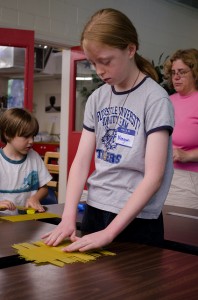
Today, thanks in part to the widening influence of “evangelical” Christians and the ultra-conservative “Tea Party” political movement, both of which strongly support homeschooling, anecdotal evidence indicates that even more young people are studying at home. At 17 or 18, they compete with graduates of public and private schools for admission to college. There, some homeschooled students step into a classroom for the first time.
If you’re reading this on a school day, you can be sure that in hundreds of thousands of homes across America, a parent — most often the mother — is passing out books, executing carefully drawn lesson plans, and teaching children everything from algebra to zoology.
This can be costly to the family in today’s tight economy, since, to do this, one parent almost certainly must stay home rather than hold an outside, paying job.
Homeschooling is nothing new in America. But it took hold as an organized movement in the 1980s among religious conservatives. The homeschooling movement has since broadened to include parents of all faiths — or none at all.
They seized upon the work of educators Raymond and Dorothy Moore, who sparked the “Early Childhood Education” movement in the 1960s. The Moores asserted that formal schooling actually harms children academically and socially, especially by stigmatizing slow learners as stupid and shunting them off into “special ed” or “vocational” classes. Home economics, craft-oriented shop, that sort of thing.
Students of all intellectual levels thrive when given the love, encouragement, and extra attention of a parent who’s tailoring a course of study to meet their abilities, homeschoolers argue.
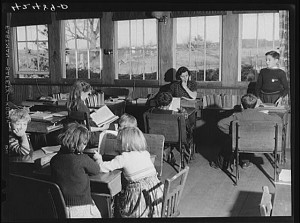
A teacher, Miss Holmes, watches over her flock in a Connecticut one-room schoolhouse in 1940. (Library of Congress)
In these households, it’s not unusual to find several children, ages 4-16, being taught together. Older kids help teach younger ones, as they once did in America’s rural, one-room schoolhouses. And today’s explosion of freely available, online research and educational tools makes the “home teacher’s” — and the homeschooled student’s — job easier.
In some communities, homeschoolers have formed cooperatives in which children from several households spend part of each day in neighborhood groups, learning from parents who have particular academic or professional backgrounds. Historians, journalists, biologists, etc.
Parents who prefer to educate their children themselves point out that in a schoolroom, where a teacher often must instruct 30 or more students at a time, lessons roll along with little opportunity to stop and help those who are falling behind. Homeschooling parents say their kids have a better chance of being independent thinkers and hard workers.
In nationwide surveys in 2003 and 2007, they told pollsters that five factors, in particular, motivated them to teach their children at home:
• They believe they give them a better education.
• They can incorporate religious training into learning.
• They feel their neighborhood school offers a poor learning environment.
• They have personal reasons. For example, the mother may be at home anyway, caring for an elderly parent.
• They say public school doesn’t develop their children’s character or morality. To the contrary, in some cases.
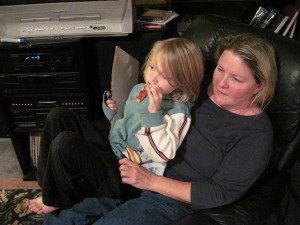
Grandma and grandson watch another child, who's being homeschooled, draw. (kellyhogaboom, Flickr Creative Commons)
Critics of homeschooling argue that parents as their children’s teachers are often not trained or supervised, their standards can be low or haphazard, and that in some cases homeschooled children are browbeaten into learning. Other critics object to what they call the “religious indoctrination” of children, which, they say, stunts their curiosity and free expression. Still others worry that homeschooled children will become socially isolated and miss out on valuable school and social activities.
Homeschooling parents reply that their kids go to scout or church meetings, play sports, and shop at malls with friends, just like children who attend traditional classes. And because their study schedules are flexible, activities can be more easily arranged any time of day or night.
They certainly can break away each afternoon to walk or get a lift to the nearest school to join in activities such as band practice and basketball and chess-club matches.
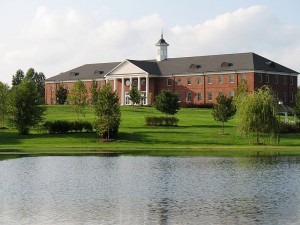
The main administration and classroom building at Patrick Henry College. (Patrick McKay, Wikipedia Creative Commons)
About five years ago, I drove from VOA’s Washington, D.C., offices into the Virginia countryside to what’s sometimes called “horse country,” to visit a brand-new college: Patrick Henry [1]in Purcellville. It’s a private, four-year Christian school with a twist. A large number of its 400 or so students are homeschooled.
That was one of its reasons for being. Its founding president — now chancellor — was Michael Farris, a constitutional-law expert who had also founded the Home School Legal Defense Association. [2] It has successfully advocated for court rulings and government policy changes that favor homeschooling.
Farris, who has been politically allied with fundamentalist Christian leaders such as Pat Robertson and Jerry Falwell, ran unsuccessfully for the Virginia lieutenant-governorship in 1993. He and his wife, Vicki, have been teaching some — and at one time all — of their 10 children at home since 1982.
Farris told me that Patrick Henry, the revolutionary patriot,[3] orator, and statesman, was the perfect model for a college that eagerly welcomed homeschooled students.
Patrick Henry was a Virginian. He was homeschooled. He learned his trade by a lot of hands-on activity. He didn’t go to college or law school. He was mentored. And he was a strong Christian. The college is in Virginia. We have a homeschool emphasis. It’s a Christian college, and we love liberty, and so it was a perfect opportunity to name a college after him.
When Farris and others decided to start a college in little Purcellville, support poured in from the Christian homeschooling community. All but two of Patrick Henry’s first 90 students were taught at home.
Many homeschoolers have been suspicious of the federal government, especially when it imposes specific testing standards for students. So Patrick Henry College accepts no federal aid. Private donors contributed more than $5 million to get the college started.
On that visit to horse country, I met Matthew Douglas of Templeton, California, then 18 years old, who, along with his sister, was educated at home by his father, an air-conditioning and refrigeration repairman, and by their homemaker mom.
“When I saw that this brought in politics and history and all that stuff that I loved, I just thought this is the place for me,” Matthew told me. “The experience has been great. It’s like I have a completely new family. I have 90 new brothers and sisters.”
National studies show that by and large, homeschooled youngsters outscore both public- and private-school students on entrance tests, and then thrive in college. Patrick Henry College freshman Sarah Cooke, whose mother — a chemist — and father — a pediatrician — taught her and her sister and four brothers at home in Polk, Pennsylvania, told me that’s because homeschooled students are, as one American saying goes, just “smarter than your average bear”:
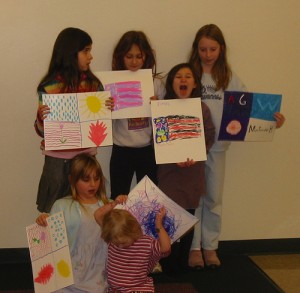
Homeschooled students, who might or might not be from one family, show off sketches they drew after learning about flags. (mia3mom, Flickr Creative Commons)
If you look at the statistics about homeschoolers, we are independent thinkers. We do score higher. We do better. Colleges actually seek us out. We have won national spelling bees. We have won the geography bee. We get higher SAT [college-admission test] scores than average. We’re obviously smarter. That says one thing for homeschooling. There are some generalizations that you can draw.
One of them might be that homeschooled kids are a self-confident — maybe even cocky — lot.
Paul Bonicelli [pron: bonn-ih-CHELL-ee], who’s now executive vice president of Regent University, another small Christian college in Virginia, was academic dean at Patrick Henry when I visited. “The worst thing is to have students who are in college just to play football or get into a fraternity,” he told me.
The best is a student who loves to learn. And I’ve found that the homeschooled students love to learn above all. The students are ready to speak their minds about things.
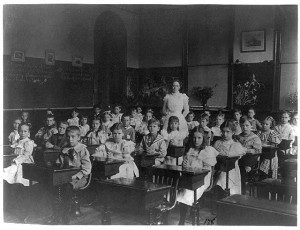
This wasn't MY classroom, for this photo preceded me in school by half a century, but it shows a typical class setting. (Frances Benjamin Johnston, Library of Conress Photo)
I’ve told you in previous posts that, while I wasn’t exactly homeschooled, I did learn a lot at the arm of my mother, an elementary-school teacher, as I helped her grade the papers of her students each evening. There’s a lot of learning by osmosis in such situations.
I loved schoolrooms, though, by and large — if you ignore my work in German and most every subject ending in “y.” An only child and a naturally introspective lad, I probably would have been even more spoiled and become more of an egghead than I am had I stayed home.
Bathed in my mother’s praise for my good work on her lovingly crafted assignments, I might even have taken the translation from the Greek of my first name, Theodore, far too literally:
“Gift of the Gods.”
Ted's Wild Words
These are a few words from this posting that you may not know. Each time, I'll tell you a little about them and also place them into a cumulative archive of "Ted's Wild Words" in the right-hand column of the home page. Just click on it there, and if there's another word that you'd like me to explain, just ask!
Browbeaten. Intimidated, often by rapid-fire questions or accusations. Witnesses in court are sometimes browbeaten if the judge doesn’t intervene. The origin of the word is uncertain, but it apparently began as a description of the beater, not the beaten. Specifically, the beater’s “knitted” (frowning) eyebrows.
Haphazard. Disorganized, random, casual or even careless.
Smarter than your average bear. This was the self-promoting saying of Yogi Bear, a cartoon character in two American television series, beginning in 1958. Yogi thought he was quite clever at devising ways to steal campers’ picnic baskets at Jellystone National Park — a takeoff on Yellowstone Park. Delivered in an affected manner borrowed from a human character in another TV show, “I’m smarter than your average bear” became a catchphrase in the popular culture.
Spelling bee. A contest in which contestants, one at a time, are required to spell a difficult word. Those spelling it incorrectly are eliminated, until only one person, who spells the word that one other finalist missed, is left standing as champion. The energy and busyness of the hardworking honeybee inspired this term as well as “quilting bee,” “sewing bee,” and others.
Stunt. The noun form of this word, referring to pranks or difficult maneuvers (executed by “stunt men” or women), is well known. The verb form, to stunt, refers to stopping or hindering something, as in “stunting the growth” of someone or something.

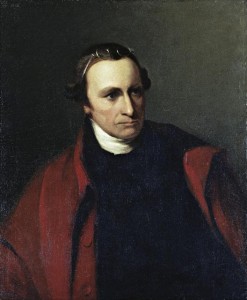

One response to “In ‘Class’ — at Home”
[…] […]